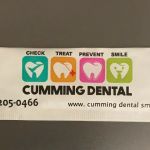- 1-Understanding-Oral-Thrush-in-Children
- 2-Common-Symptoms-of-Oral-Thrush-in-Children
- 3-How-Oral-Thrush-Affects-Children
- 4-Diagnosing-Oral-Thrush-in-Young-Kids
- 5-Treatment-Options-for-Oral-Thrush
- 6-Prevention-and-Care-Tips-for-Parents
1. Understanding Oral Thrush in Children
Oral thrush is a common fungal infection in children caused by the overgrowth of Candida yeast in the mouth. This condition frequently affects infants and toddlers but can occur at any age. The symptoms of oral thrush in children may sometimes be subtle, making it challenging for parents to recognize early signs.
The balance of healthy bacteria and yeast in the mouth can be disrupted by factors such as antibiotic use, weakened immune systems, or certain medical conditions. When this happens, Candida multiplies rapidly, leading to the characteristic white patches and discomfort associated with oral thrush.
2. Common Symptoms of Oral Thrush in Children
The hallmark symptoms of oral thrush in children include white or cream-colored patches inside the mouth, often appearing on the tongue, inner cheeks, gums, and roof of the mouth. These patches may look like cottage cheese and can sometimes be wiped away, revealing red, inflamed areas underneath.
Other symptoms include fussiness during feeding, difficulty swallowing, and a persistent sore throat. Some children might experience a loss of appetite or irritability, especially infants who cannot express their discomfort verbally.
3. How Oral Thrush Affects Children
While oral thrush itself is not usually serious, it can cause significant discomfort and affect a child's ability to eat and sleep properly. If left untreated, the infection may spread beyond the mouth to other parts of the body, particularly in children with weakened immune systems.
Parents often notice their child becoming crankier or refusing certain foods, which can impact nutrition and growth. Early recognition of symptoms ensures timely treatment and minimizes complications.
4. Diagnosing Oral Thrush in Young Kids
Pediatricians and dentists diagnose oral thrush primarily through a clinical examination of the mouth. In some cases, a swab may be taken to confirm the presence of Candida yeast. It is important to differentiate oral thrush from other conditions with similar appearances, such as milk residue or other infections.
Parents should consult healthcare providers promptly if they observe white patches or if their child shows signs of oral discomfort, especially if symptoms persist beyond a few days.
5. Treatment Options for Oral Thrush
Treatment usually involves antifungal medications, which may come in the form of oral gels, liquids, or lozenges appropriate for children. These medications help eliminate the yeast overgrowth and relieve symptoms. In addition, maintaining good oral hygiene and sterilizing feeding equipment are crucial steps.
Some parents have shared stories of successful treatments after switching bottles and pacifiers daily, illustrating how practical care complements medical therapy.
6. Prevention and Care Tips for Parents
Preventing oral thrush involves keeping your child’s mouth clean, practicing proper feeding hygiene, and limiting unnecessary antibiotic use. Breastfeeding mothers should also be mindful, as Candida can transfer between mother and child.
Using recommendations from trusted sources can guide parents in managing oral thrush effectively. For comprehensive advice and professional services related to children’s oral health, visit Dentistry Toothtruth to access tailored support and products.







 Kremers, Forbes and Associates DDS5.0 (689 review)
Kremers, Forbes and Associates DDS5.0 (689 review) VCC: The Gary Center2.0 (45 review)
VCC: The Gary Center2.0 (45 review) Hassan Ismail5.0 (1 review)
Hassan Ismail5.0 (1 review) Open Door Family Medical Center- Sleepy Hollow4.0 (215 review)
Open Door Family Medical Center- Sleepy Hollow4.0 (215 review) Cumming Dental Smiles: Bethelview Road4.0 (529 review)
Cumming Dental Smiles: Bethelview Road4.0 (529 review) CJ Dental4.0 (13 review)
CJ Dental4.0 (13 review) The Importance of Oral Health Education During Pregnancy for a Healthy Pregnancy
The Importance of Oral Health Education During Pregnancy for a Healthy Pregnancy Best Tips for Brushing Your Teeth Properly for Healthy Gums: Essential Techniques for Oral Health
Best Tips for Brushing Your Teeth Properly for Healthy Gums: Essential Techniques for Oral Health Why Skipping Dental Checkups Can Lead to Bigger Oral Health Problems
Why Skipping Dental Checkups Can Lead to Bigger Oral Health Problems Advantages of Porcelain Dental Restorations
Advantages of Porcelain Dental Restorations How Can Diabetes Cause Tooth and Gum Problems? Preventing and Managing Oral Health Issues
How Can Diabetes Cause Tooth and Gum Problems? Preventing and Managing Oral Health Issues Healthy Habits for Promoting Good Oral Health and Hygiene: Tips for a Healthy Smile
Healthy Habits for Promoting Good Oral Health and Hygiene: Tips for a Healthy Smile